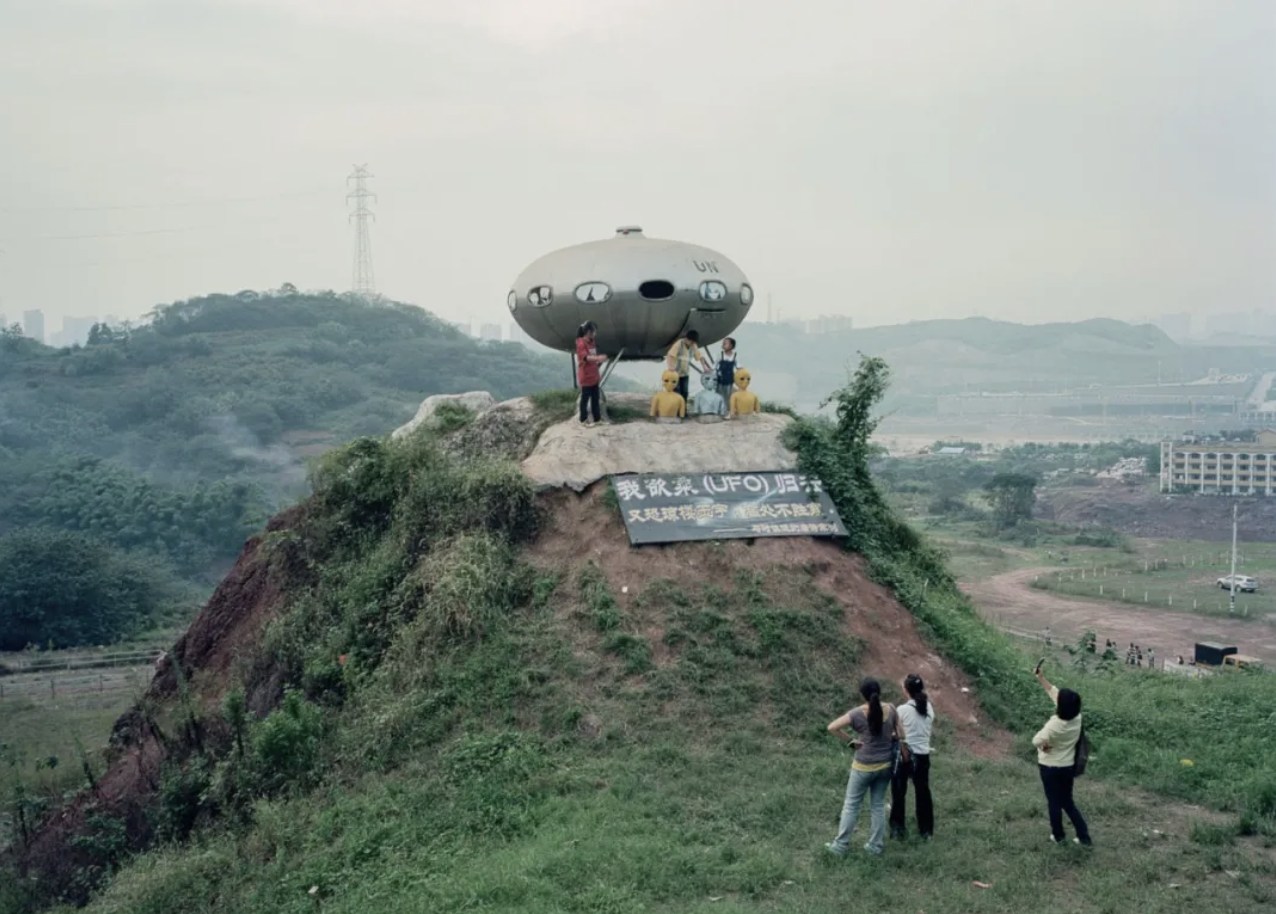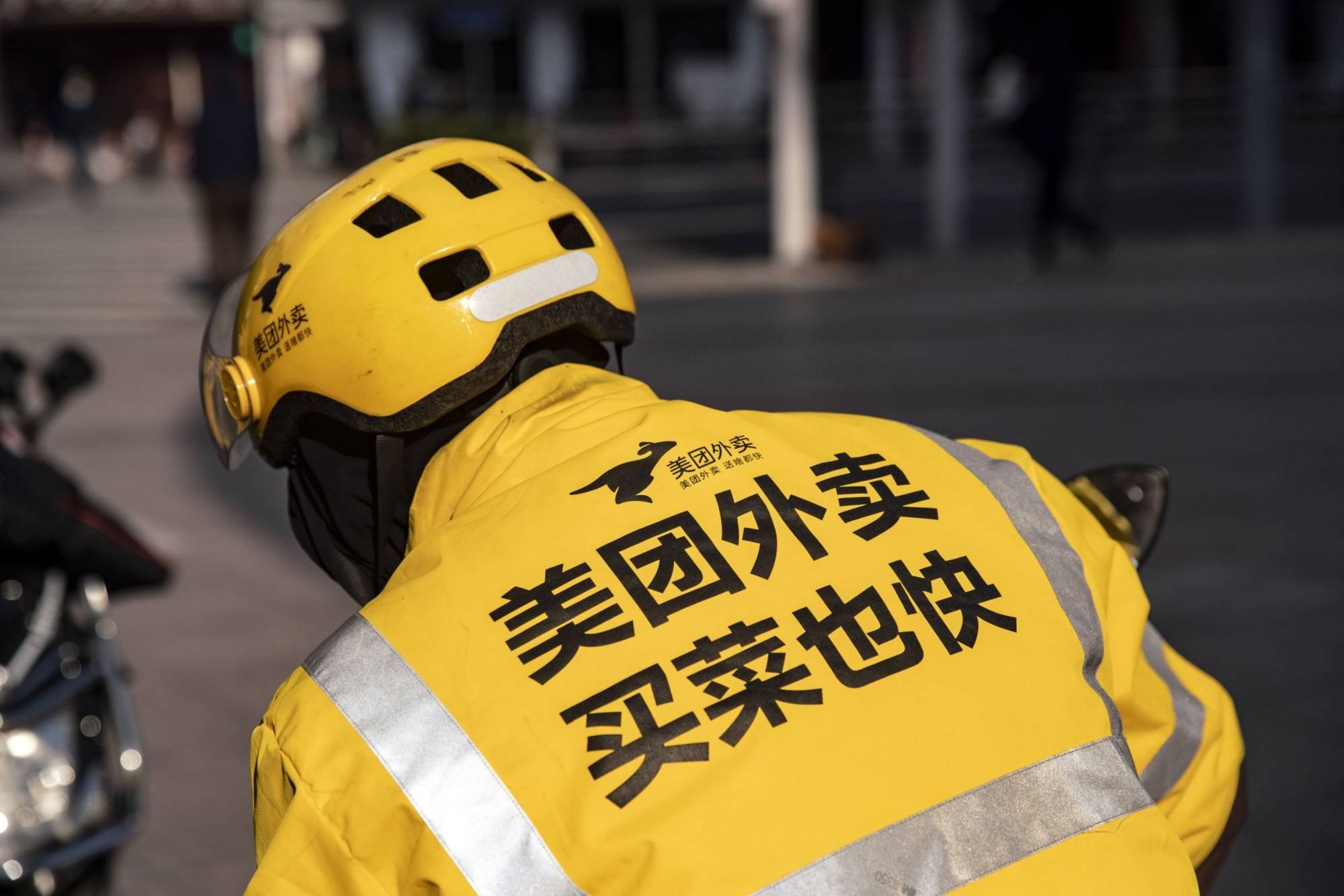Our crowded minivan rattles up the curving mountain roads of Fengdu, several hours outside of Chongqing, a sprawling Sichuan-adjacent municipality of 30 million. The apartment complexes and noodle houses have all faded away, leaving us with just trees and a view of the city receding into fog.

Inside the van with me is a nine-person production team — all working on an official documentary for the city of Chongqing — and our tour guide, Bonnie. She’s a smiling middle-aged woman with curly hair and eerily good English, having spent time in Nevada. She’s going to help us hunt for ghosts.
She turns around abruptly to address the group.
“Okay, everyone. I’d like to tell you some information about Fengdu Ghost City.”

The “city” is really a complex network of Daoist temples and shrines, all dedicated to the Chinese concept of the afterlife. According to tradition, when a person dies, their spirit comes here to be judged by three trials. If it passes, the spirit can immediately be reincarnated higher on the ladder of existence. If it fails, the spirit must suffer extreme torture in hell for 500 years, after which it can be reborn as something like a spider or a cockroach, and start all over again.

“Fengdu Ghost City is famous across all of Asia, as the place where everyone must go when their spirit leaves their body,” says Bonnie.
“So even if someone I know back in Texas dies, they have to come all the way out here?” I ask.
I’m skeptical of the long commute, and also of the claim that everyone in Asia views this small Chinese town as the mecca for all human souls.
“Yes,” answers Bonnie without missing a beat. “You could call it the International University of the Netherworld.”
Soon enough we come to a stop and get out of our car. We pass through a turnstile and pack into a cablecar, and the remaining silhouettes of the city disappear behind a thick white sheet of fog.

Bonnie leads us along the path. She’s clearly passionate about the ghosts, and seems impatient when we stop intermittently to shoot. Eventually we arrive at the first trial, the Bridge of Helplessness. It’s an easy one, and after hearing the rules, I’m not too worried about the consequence of failure (falling into an accidental and eternal damnation).
Just walk down the middle bridge of three without falling, and without looking back. It’s weirdly steep, but nothing an average bridge-walker couldn’t handle. After that, you can choose to walk either the left bridge for blessings of good health, or the right bridge for wealth and fortune. I walk straight down the middle bridge (apparently, it’s much more difficult for ghosts), and do an extra walk down the bridge of good health. I’m not here for games — I’m here to find ghosts.

While we’re setting up equipment, three men in traditional costume show up at the bridge. Our Mandarin-speaking producer points to them and tells me, “he catches ghosts.”
At first, I’m thrilled to meet what sounds like an exorcist, or at least a low-level reality TV host. But after some clarification, it turns out to be something significantly more bizarre.

The three men are dressed as the Ghost King, the judge of souls, and a ghost who escorts souls to the underworld. In ancient times, people would hang paintings of the Ghost King on their doors, in hopes that his imposing image would frighten away the smaller ghosts who feared him.
In a distorted evolution of that tradition, domestic tourists start lining up to have their picture taken with the Ghost King on the Bridge of Helplessness. What makes it strange is that the men are obviously not part of the majority Han Chinese ethnicity. I later learned they were from the Wa ethnic minority in Yunnan.


“Why do they have to be ethnic minorities?” I ask our producer. “Are they known for dealing with ghosts?”
“No,” she says. “But they have darker skin, and they look different. So it just helps with people’s imagination.”
I watch Han tourists file by for souvenir photos of their brief moment standing next to an ethnic minority. It seems blatantly dehumanizing, but everyone looks happy about it. After the crowd has moved on, I go to talk with the Ghost King and his crew.
So how do you like it in Fengdu?
It’s fine. Wherever work is the best, that’s a fine place to be.
Do people in Yunnan practice Daoism?
No, not really. We’re not ones to blindly follow faith like that.
Have you seen any ghosts around here?
No. Never in my life.
We talk for about ten minutes. My reaction amuses them. I ask them to write down their names in my notes, and suddenly realize they don’t quite know how to write in Chinese characters. Eventually they finish writing down their names, all with the same family name Wei. I say goodbye to the brothers, and continue my hunt for ghosts.

By now we’re at the second judgment, the Ghostly Gate Pass. Bonnie tells us that men should cross the threshold with their left foot, and women with their right. Most importantly, don’t step on the threshold itself, or risk waking the impish, trouble-making ghosts who guard the gate.

Again, as humans, these trials are rather easy. For a spirit, the only way to pass this judgment is if you have a lu yin, a spiritual passport that members of your family have to ceremonially burn after you die. We make it past the ghosts without waking them — which is lucky for them, lest they find themselves face-to-face with a serious and capable ghost hunter — and walk out into a hall of statues depicting different ghosts, each with a different specialty of haunting. There are alcoholic ghosts who punish drunkards, and disciplinary ghosts who spank poorly behaved children. Each sin has a specific ghost and punishment.


Nearby, I see a group of site caretakers, and take the opportunity to dig for ghost clues. But when I ask one if they’ve seen any ghosts in the area, he laughs and replies that if he ever did, he’d run away.
The other caretakers laugh with him, but one man steps aside and starts talking to me. He’s higher up in the ranks, maybe a tour guide or a site manager.
“There was one man. He had a heart attack, and nearly died,” he tells me. “Paramedics were able to revive him, but when he came back to consciousness, he had vivid memories of ghosts with chains, pulling and dragging him down into hell.”
The story sends shivers down my spine. I thank the man for his intel, and continue my hunt with renewed energy. Soon we arrive at the third and final judgment, the Heavenly Emperor’s Palace, where spirits must come face to face with the king of the netherworld himself.



The Heavenly Emperor’s Palace has stood here since approximately 480 CE, and was last restored around 1780. It’s lasted through many dynasties, and, unlike numerous Chinese temples, the Cultural Revolution as well. According to Bonnie, the Red Guards (impressionable youth who carried out Mao’s campaign against traditional culture) were hesitant to destroy the home of the Heavenly Emperor. He’s the equivalent of the grim reaper in Chinese mythology, and he determines precisely when people die.
Zhou Enlai, the first Premier of China and right hand man to Mao, visited the temple in 1958, and instructed local officials to protect it. Today it stands in great condition, giving visitors a rare peek into the depths of hell.

Lining the temple’s antechamber are huge statues of some of the major demons who deal with the passage of souls to the afterlife. Some hold chains, used to drag spirits down to the netherworld. Some have the faces of animals, and some carry books to record the names of doomed souls.

Around the corner, another hallway depicts scenes of torture and pain that await those who sin during their mortal lives. Those who are unfaithful to their spouse have their genitals sliced in two, or crushed by an ogre wielding a giant pestle. Elsewhere, sinners are made to drink the magical Mengpo Soup, which makes them completely forget their past lives.

“Daoists believe that if you live an evil life, even if you escape punishment, you can never escape the final punishments of the spirit world,” Bonnie tells us.
At this point, we’re thoroughly creeped out. We’ve trudged for hours through silent grey fog, seen every kind of ghost imaginable, and gotten a firsthand look at the agonies of hell itself. It’s time to pack up and begin our descent back to the mortal world.
As we walk down the mountain path, things begin to look less like Dante’s Inferno, or an ancient Tang Dynasty horror flick, and more like normal Chinese civilization. We pass a gift shop selling knock-off Scream masks. A de-feathered duck carcass hangs from a tree, infusing the abstract motif of ”the afterlife“ with a now-concrete presence of death. Closer to the base of the mountain, a theatre troupe performs a mix of Sichuan opera and ghost stories.



And yet, I can’t shake the feeling of failure. We’ve run the whole gamut of Chinese ghost culture, but haven’t managed to find a single ghost on our journey. Have I failed as a ghost hunter? Or is it just that the ghosts of Fengdu Ghost City have long since packed up and left?
I confide these thoughts in Bonnie as we made our way down the path, and ask her if she thinks there are ghosts lurking in these temple grounds.
“Actually, I saw something myself! It was an autumn evening in 1998. The boat arrived very late that day — it was almost 8pm, and I was leading a group of tourists from America to the hilltop. We saw a human-like shape, with flowing cloth all over its body, dancing against the dim moonlight. We all screamed, and then it just disappeared. It’s quite creepy, isn’t it?”
“Creepy” is one word for it. Something about this fog feels strange, and we can’t quite place it. But we wouldn’t want to go back at night.


—
Photos by Nicole Chan
You might also like:
 Radii Halloween Special: Rare Photos from Inside Shanghai’s Haunted Wukang MansionArticle Oct 31, 2017
Radii Halloween Special: Rare Photos from Inside Shanghai’s Haunted Wukang MansionArticle Oct 31, 2017
















